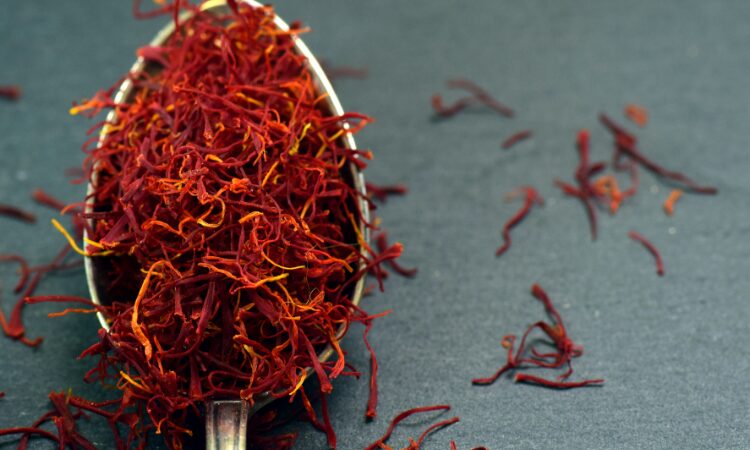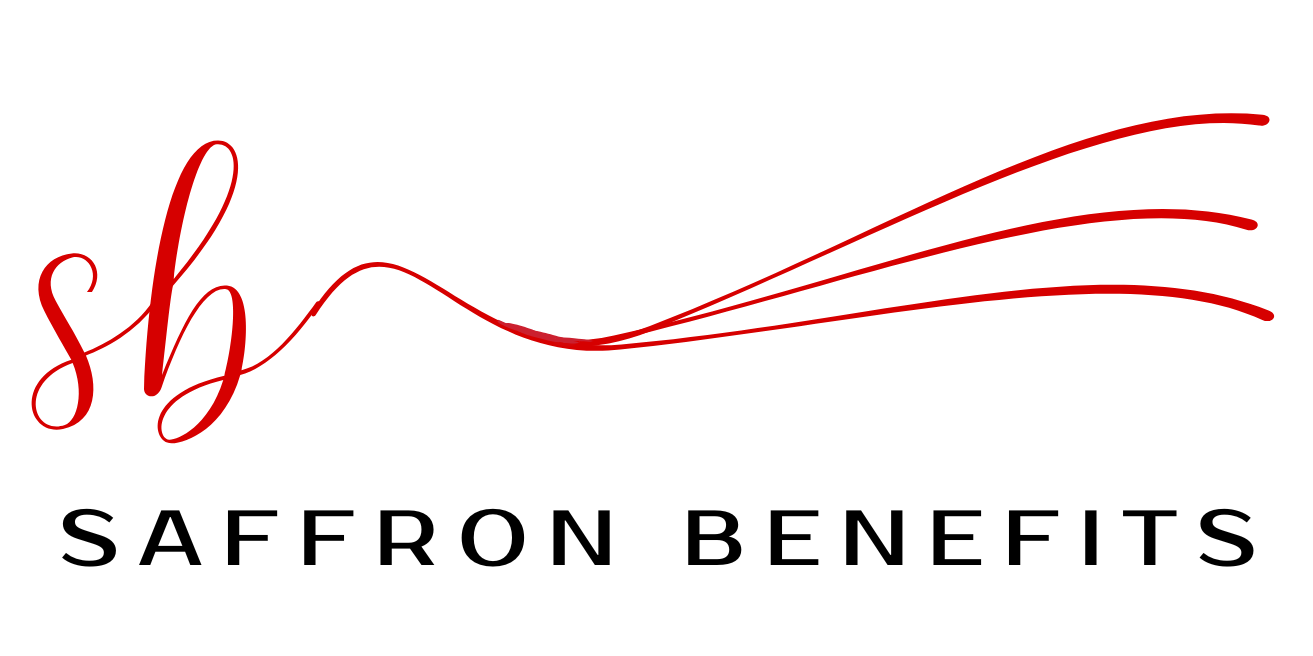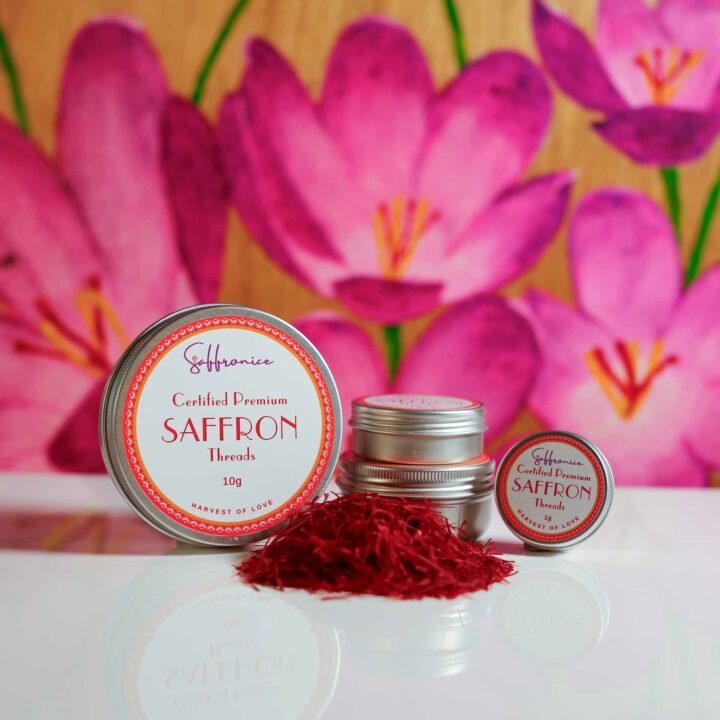📌 Quick Answer: The global saffron market is projected to reach $1.8 billion by 2027, growing at a 5.8% CAGR. Key trends include expanding culinary applications, health-conscious consumer demand, technological innovations in cultivation, premium positioning, and emerging markets in the Asia-Pacific, showing the strongest growth potential.
The global saffron market is experiencing unprecedented transformation, driven by evolving consumer preferences, technological advancements, and expanding applications across culinary, pharmaceutical, and cosmetic industries. This comprehensive analysis examines the key trends shaping the saffron industry and provides strategic insights for stakeholders navigating this dynamic marketplace.
Understanding these market trends is crucial for producers, traders, investors, and consumers seeking to capitalize on opportunities in the world’s most expensive spice market. The convergence of traditional cultivation methods with modern consumer demands creates unique challenges and opportunities that define the industry’s future trajectory.
Chef’s Professional Tip: Current market trends show restaurants increasingly featuring saffron in signature dishes to justify premium pricing, while home cooking enthusiasts drive demand for smaller, accessible packaging formats that make this luxury ingredient more approachable.
Key Market Trends Defining the Saffron Industry
- Market Growth: 5.8% CAGR projected through 2027, reaching $1.8 billion globally
- Health Consciousness: Scientific validation of therapeutic properties expanding market segments
- Premium Positioning: Quality differentiation creating sustainable competitive advantages
- Technology Integration: Modern cultivation and processing improve efficiency and consistency
- Geographic Expansion: Emerging markets in Asia-Pacific and Latin America are driving demand
- Application Diversification: Beyond culinary uses into pharmaceuticals, cosmetics, and nutraceuticals

Historical Context and Market Evolution
The historical significance of the saffron trade provides essential context for understanding contemporary market dynamics and emerging trends.
Traditional Market Foundations
Saffron’s market evolution from ancient luxury commodity to modern global industry reveals consistent patterns that influence current trends:
Cultural Heritage Impact: Traditional uses in religious ceremonies, traditional medicine, and regional cuisines create stable demand foundations that support market growth regardless of economic cycles.
Geographic Concentration Legacy: Historical production centers in Iran, Spain, and Kashmir continue dominating quality perceptions and premium positioning strategies.
Artisanal Production Methods: Hand-harvesting traditions maintain product differentiation and luxury positioning that resist commoditization pressures.
Modern Market Transformation
Contemporary trends reflect the intersection of traditional values with modern consumer expectations:
Quality Standardization: International standards (ISO 3632) enable global trade while preserving regional characteristics and premium positioning opportunities.
Digital Market Access: E-commerce platforms democratize access while maintaining quality premiums through authentication and direct-producer relationships.
Supply Chain Modernization: Technology integration improves traceability and quality control without compromising artisanal character.
Food Scientist’s Note: The market’s evolution demonstrates how traditional agricultural products can maintain premium positioning through quality focus rather than volume competition – a crucial lesson for sustainable industry development.
Global Production Landscape and Regional Dynamics
Global production patterns reveal shifting dynamics that influence market trends and competitive positioning.
Major Production Regions and Market Share
Iran: Dominant Market Position. Iran maintains 85-90% of global production, creating significant influence on market trends:
- Production Capacity: 300-400 metric tons annually
- Cost Leadership: Scale economies supporting competitive pricing
- Quality Range: Serving volume markets while maintaining premium segments
- Market Challenges: International sanctions driving diversification trends
Spain: Premium Market Leadership.p Spanish production focuses on ultra-premium segments with distinct market positioning:
- Production Volume: 1.5-2 metric tons annually
- Quality Focus: Exclusively Grade I products for luxury applications
- Brand Strategy: Protected Designation of Origin supporting premium pricing
- Market Innovation: Leading sustainable and organic certification trends
Emerging Production Regions: New producing areas create supply diversification and market opportunities:
Kashmir, India:
- Ultra-premium positioning with the highest global prices
- Limited production creates exclusivity and scarcity value
- Traditional methods appealing to heritage-conscious consumers
Afghanistan:
- Rapid production growth (25-30% annually)
- International development support improves quality standards
- Alternative crop programs creating sustainable rural development
Morocco and Greece:
- Regional specialization serving European markets
- Cooperative structures ensuring consistent quality
- Tourism integration creates additional revenue streams
Production Innovation Trends
Modern cultivation methods demonstrate how technology integration maintains traditional quality while improving efficiency:
Precision Agriculture: GPS-guided planting and climate monitoring optimize growing conditions while preserving artisanal character.
Quality Control Systems: Real-time testing ensures consistency while maintaining traditional processing methods.
Sustainable Practices: Organic farming methods appeal to environmentally conscious consumers while supporting premium positioning.
Key Market Drivers and Consumer Trends
Multiple factors converge to drive sustained market growth across diverse consumer segments and applications.
Culinary Market Expansion
Culinary applications continue expanding beyond traditional boundaries:
Professional Foodservice Growth:
- High-end restaurants incorporate saffron in signature dishes
- Celebrity chef endorsements increase consumer awareness
- Social media showcases visually appealing saffron dishes
- International cuisine popularity drives authentic ingredient demand
Home Cooking Evolution:
- Premium home cooking trends support luxury ingredient adoption
- Smaller packaging formats make saffron more accessible
- Online recipe platforms provide usage guidance and confidence
- Gift market growth for specialty cooking ingredients
Health and Wellness Integration
Scientific validation of saffron’s health benefits creates expanding market opportunities:
Pharmaceutical Applications:
- Clinical research supports mood enhancement and cognitive benefits
- Standardized extracts enable pharmaceutical-grade applications
- Patent development protects innovation while expanding uses
- Regulatory approval processes validate therapeutic claims
Nutraceutical Market Growth:
- Dietary supplement integration targeting mental health and wellness
- Functional food applications in premium health products
- Organic and natural product positioning appeals to health-conscious consumers
- Combination formulations with complementary ingredients
Cosmetic Industry Adoption:
- Anti-aging and skincare applications leverage antioxidant properties
- Luxury beauty brands incorporate saffron for premium positioning
- Traditional beauty practices gain mainstream acceptance
- Innovation in delivery systems and product formulations
Premium Market Positioning Trends
Quality differentiation strategies enable sustainable competitive advantages:
Origin Authentication: Geographic indication and traceability systems support premium pricing for verified authentic products.
Quality Certification: Laboratory testing and grade verification build consumer confidence and justify premium positioning.
Sustainable Production: Environmental and social responsibility certifications appeal to conscious consumers willing to pay premiums.
Price Dynamics and Market Economics
Saffron price trends reflect complex interactions between supply constraints, quality premiums, and evolving demand patterns.
Price Trend Analysis
Current pricing trends demonstrate market sophistication and differentiation:
Quality-Based Pricing:
- Grade I (Coupe): $3,000-8,000 per kilogram wholesale
- Grade II (Mancha): $2,000-4,000 per kilogram wholesale
- Grade III (Rio): $1,200-2,500 per kilogram wholesale
Origin Premiums:
- Kashmir saffron: 80-150% premium over Iranian equivalents
- Spanish La Mancha: 40-60% premium for PDO certification
- Organic certifications: 20-30% premium for sustainable production
Market Volatility Factors:
- Seasonal harvest variations create predictable price cycles
- Weather events can trigger 20-50% price fluctuations
- Geopolitical events affecting major producing regions
- Currency fluctuations influence international competitiveness
Value Chain Economics
Supply chain analysis reveals margin distribution and optimization opportunities:
Producer Level: 30-40% of the final wholesale price. Processing and Quality Control: 10-15% for certification and preparation Export/Import Operations: 15-25% for international trade and logistics Wholesale Distribution: 20-30% for market access and inventory management Retail Markup: 50-100% for consumer packaging and branding

Supply Chain Innovation and Distribution Trends
Modern distribution networks demonstrate how traditional products adapt to digital marketplace demands.
Digital Transformation Impact
E-commerce integration transforms market access while maintaining quality standards:
Direct-to-Consumer Platforms:
- Producer websites enable direct sales and premium capture
- Social media marketing builds brand awareness and customer relationships
- Subscription models create predictable revenue streams
- Customer education content drives appreciation and loyalty
Marketplace Integration:
- Specialized spice platforms provide quality curation and authentication
- General e-commerce platforms expand market reach and accessibility
- Mobile applications enable convenient purchasing and reordering
- Review systems build trust and quality accountability
Supply Chain Digitalization:
- Blockchain technology provides end-to-end traceability
- IoT sensors monitor storage conditions during distribution
- Automated inventory management optimizes stock levels and reduces waste
- Digital documentation streamlines international trade processes
Quality Assurance Trends
Authentication methods become increasingly sophisticated to combat fraud and maintain market integrity:
Laboratory Testing Advancement:
- DNA analysis confirms species and origin authenticity
- Chemical profiling detects adulterants and quality deviations
- Spectroscopic methods enable rapid field testing
- Blockchain integration creates tamper-proof quality records
Certification Programs:
- Third-party quality verification builds consumer confidence.
- Organic and fair trade certifications appeal to conscious consumers
- Geographic indication protection preserves regional authenticity
- Industry standards harmonization facilitates international trade
Regulatory Framework and Quality Standards
International quality standards create market structure and consumer protection while enabling premium positioning.
International Standards Evolution
Quality standardization trends reflect market maturation and consumer sophistication:
ISO 3632 Implementation:
- Chemical composition standards (crocin, picrocrocin, safranal content)
- Physical quality specifications ensuring consistency
- Sampling and testing protocols enabling fair comparison
- Labeling requirements supporting consumer information
Regional Certification Systems:
- European PDO protection for traditional producing regions
- National quality marks building consumer recognition
- Organic certification standards meet environmental expectations
- Fair trade programs ensure ethical production practices
Regulatory Compliance Trends
Evolving regulations create both challenges and opportunities:
Food Safety Standards:
- Pesticide residue testing ensures consumer safety
- Microbiological testing prevents contamination
- Traceability requirements enabling rapid response to issues
- Allergen labeling supporting consumer health needs
International Trade Regulations:
- Harmonized customs codes facilitating trade
- Phytosanitary requirements protecting agricultural systems
- Anti-counterfeiting measures preserving market integrity
- Trade agreement provisions affecting competitive positioning
Competitive Landscape and Market Structure
The saffron brand landscape reveals how traditional producers adapt to modern market demands while maintaining competitive advantages.
Market Structure Analysis
Established Market Leaders: Traditional producers maintain market position through scale and heritage:
- Iranian Exporters: Saharkhiz, Novin Saffron, Tarvand, leveraging production volume
- Spanish Premium Brands: Carmencita, Azafranes Manchegos, focusing on quality positioning
- Indian Specialty Producers: Kashmir-based cooperatives emphasizing ultra-premium positioning
Emerging Market Participants: New entrants challenge established players through innovation:
- Technology Integration: Digital platforms connecting producers directly with consumers
- Quality Differentiation: Specialized processing methods create unique product characteristics
- Market Segmentation: Targeting specific consumer segments with tailored offerings
- Sustainable Positioning: Environmental and social responsibility creating competitive advantages
Innovation and Product Development
Market trends drive continuous innovation across the value chain:
Product Innovation:
- Standardized extracts for pharmaceutical applications
- Convenient packaging formats for home cooking
- Organic and biodynamic varieties for premium markets
- Value-added products combining saffron with complementary ingredients
Process Innovation:
- Precision harvesting tools are improving efficiency while maintaining quality.
- Advanced drying techniques preserving potency and extending shelf life
- Quality testing automation enabling real-time monitoring
- Supply chain integration reduces costs and improves traceability
Future Market Outlook and Growth Projections
Market projections indicate sustained growth driven by multiple trends converging to expand saffron applications and consumer acceptance.
Market Size and Growth Projections
Global Market Forecast:
- 2024 Market Size: $1.4 billion
- 2027 Projected Size: $1.8 billion
- Compound Annual Growth Rate: 5.8%
- Volume Growth: 3-4% annually in traded quantities
Regional Growth Patterns:
- Asia-Pacific: 6.2% CAGR ($860 million by 2027)
- Europe: 5.4% CAGR ($540 million by 2027)
- North America: 5.1% CAGR ($270 million by 2027)
- Rest of World: 4.9% CAGR ($130 million by 2027)
Emerging Market Opportunities
Geographic Expansion:
- China: Traditional medicine applications driving premium segment growth
- Brazil: owing middle class and culinary sophistication, are an increasing demand
- Mexico: Cultural affinity and expanding restaurant industry creating opportunities
- Australia: Multicultural demographics and premium food trends supporting growth
Application Diversification:
- Pharmaceutical: Clinical research validating therapeutic applications
- Cosmetics: Natural and luxury positioning appealing to premium beauty markets
- Functional Foods: Health benefits integration into mainstream food products
- Industrial Applications: Natural coloring and flavoring for processed foods
Sustainability Trends and Environmental Considerations
Environmental consciousness increasingly influences market development:
Climate Adaptation:
- Drought-resistant cultivation techniques maintain production viability
- Geographic diversification reduces climate risk concentration
- Water-efficient irrigation systems supporting environmental sustainability
- Carbon footprint reduction through local sourcing and efficient logistics
Social Responsibility:
- Fair trade practices ensure equitable income distribution
- Community development programs supporting rural prosperity
- Gender equality initiatives are expanding economic participation
- Traditional knowledge preservation maintains cultural heritage
Strategic Implications and Market Opportunities
Understanding market trends reveals strategic opportunities for industry participants across the value chain.
Producer Strategy Opportunities
Quality Differentiation:
- Investment in certification and authentication systems
- Sustainable production methods are appealing to conscious consumers
- Innovation in processing techniques, maintaining traditional character
- Brand development program, building consumer loyalty and premium positioning
Market Access Development:
- Direct-to-consumer platforms are capturing additional margin
- Partnership development with premium retailers and restaurants
- Export market diversification reduces concentration risks
- Technology adoption improves efficiency and competitiveness
Investor and Trader Perspectives
Investment Opportunities:
- Processing facility development in producing regions
- Technology companies serving authentication and traceability needs
- Brand development programs for premium positioning
- Supply chain infrastructure supporting market expansion
Risk Management:
- Geographic diversification reduces supply concentration risks
- Quality verification systems ensure authentic product sourcing
- Forward contracting manages price volatility exposure
- Market intelligence systems enabling responsive decision-making
Key Success Factors for Market Participants
Market trend analysis reveals critical success factors for sustainable competitive advantage:
🔑 Strategic Success Drivers:
- Quality Leadership: Authentic products with verified origins command premium pricing and market loyalty
- Innovation Balance: Technology adoption that enhances efficiency while preserving traditional character
- Market Diversification: Multiple applications and geographic markets reduce dependence and risk exposure
- Supply Chain Integration: Vertical coordination from production through retail maximizes value capture
- Sustainability Focus: Environmental and social responsibility increasingly influence consumer purchasing decisions
The saffron market’s future success depends on industry participants’ ability to balance traditional production methods with modern market demands while maintaining the authenticity and quality standards that define saffron’s unique market position. Understanding these trends enables strategic positioning for sustained growth in this dynamic and valuable industry.
Frequently Asked Questions
What are the key growth drivers for the saffron market? Primary growth drivers include expanding culinary applications in global cuisines, scientific validation of health benefits creating pharmaceutical and nutraceutical opportunities, premium positioning appealing to luxury consumers, and emerging markets in the Asia-Pacific showing strong demand growth.
How is technology impacting saffron production and marketing? Technology enhances efficiency through precision agriculture, quality control automation, and digital traceability while preserving traditional artisanal character. E-commerce platforms expand market access, and blockchain systems provide authentication and consumer confidence.
What market trends are shaping consumer preferences? Key trends include health consciousness driving supplement demand, premium home cooking supporting luxury ingredient adoption, sustainability concerns favoring organic and fair trade products, and authentic cuisine interest increasing demand for traditional ingredients.
Which regions show the strongest market growth potential? Asia-Pacific leads with 6.2% projected CAGR, driven by rising incomes, cultural affinity, and expanding culinary sophistication. China and Southeast Asian markets show particular promise for both traditional medicine and premium culinary applications.
How do quality standards influence market dynamics? International standards (ISO 3632) create transparent grading systems enabling quality-based pricing, while origin certification and authentication methods support premium positioning and combat counterfeiting, building overall market confidence.
What are the long-term sustainability challenges for the saffron industry? Climate change threatens traditional growing regions, requiring adaptation strategies and geographic diversification. Labor-intensive cultivation faces workforce challenges, while maintaining authenticity amid growth pressures requires balanced innovation approaches.



